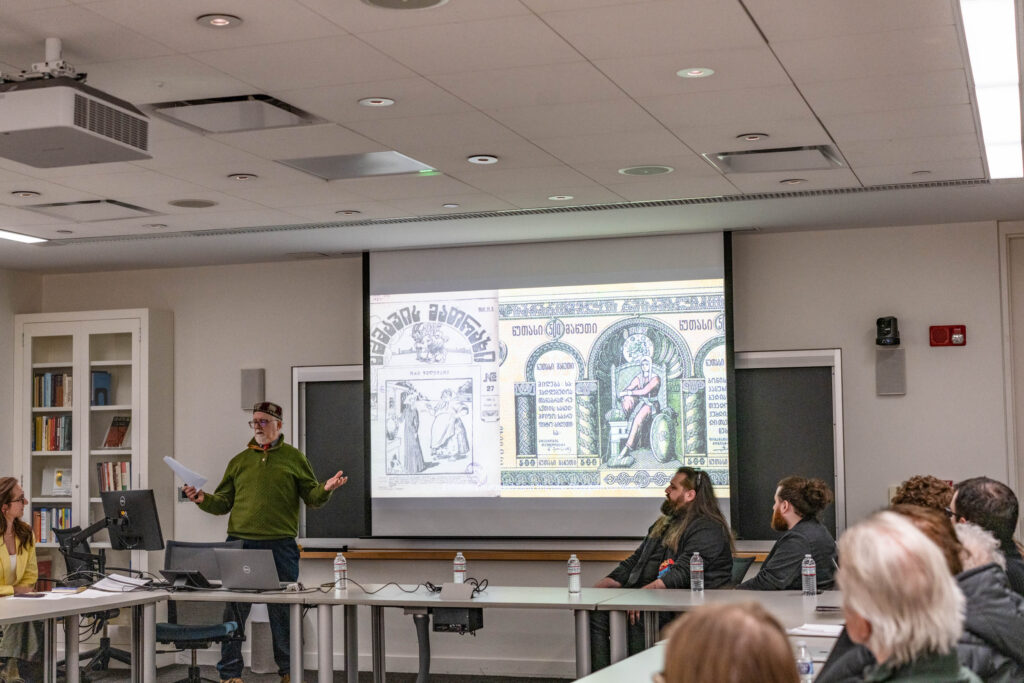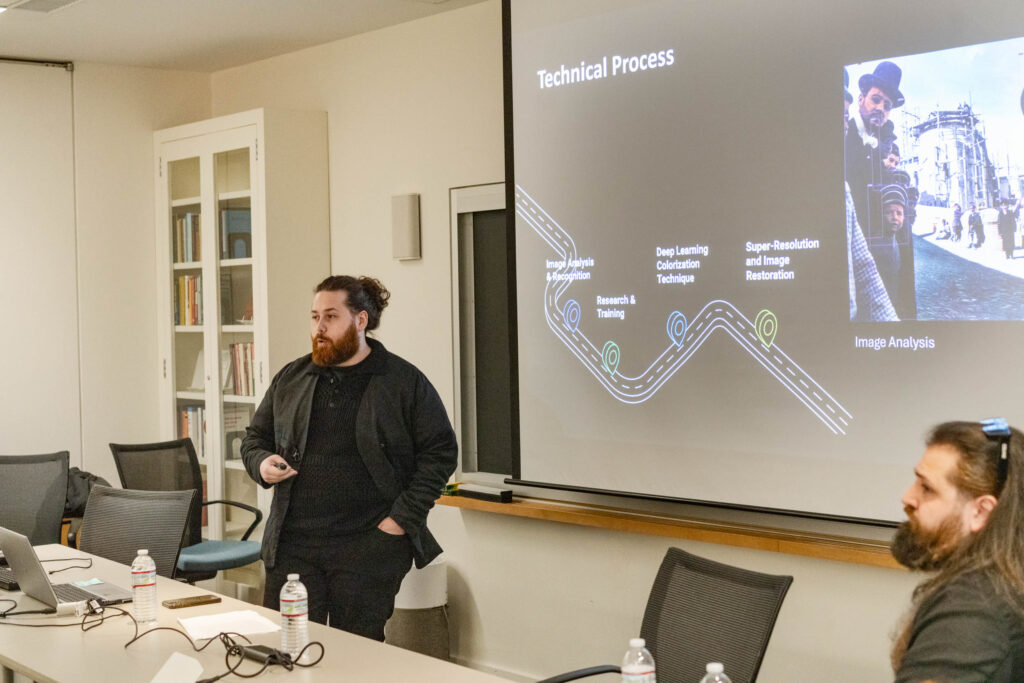Presented by the Georgia Nation Harmony Initiative in partnership with the Program on Georgian Studies at the Davis Center for Russian and Eurasian Studies at Harvard University, the Art Cross Foundation, and Art Gallery Line, Colors of Tbilisi stands as a landmark cultural initiative at Harvard University’s Fischer Commons Gallery from November 25, 2024, through June 17, 2025. This extraordinary exhibition resurrects black-and-white photographs from the 1860s-1920s through pioneering AI colorization, transforming fragile historical records into monumental windows onto Georgia’s past.

Where ancient trading paths once converged stands Tbilisi, a metropolitan palimpsest whose layers of history have been meticulously restored through Nicoloz “Nika” Tbileli’s proprietary “AI for Culture” platform. What began as a modest initiative in 2021 has evolved into a groundbreaking methodology for heritage preservation, allowing visitors to experience the true colors of street scenes, architecture, and faces that existed only in shades of gray for over a century.
“This project represents our profound responsibility toward cultural memory,” explains Tbileli. “Through machine learning, we’ve developed techniques to analyze spectral remnants in original emulsions, compare period textiles and pigments, and validate our color choices through historical research. These aren’t arbitrary colorizations but rigorously researched reconstructions of Tbilisi’s visual truth.”
Curator Ketevan Paitchadze of the Georgia Nation Harmony Initiative has orchestrated this visual symphony within the framework of the “Rooted in Culture” program, arranging the gallery as a journey through Tbilisi’s distinct neighborhoods. The medieval stone passages of Kala emerge in warm amber and ochre. The cosmopolitan Rustaveli Avenue reveals itself in the refined pastels of its European-inspired facades. The industrial quarters of Chugureti materialize in rust and indigo, while the multi-faith terraces of Avlabari ascend in burnished golds and terracotta.
The exhibition launched with a captivating lecture series held in the Bowie Vernon Room (K262) on the second floor of the Knafel Building. Distinguished Georgia scholar Professor Stephen Jones opened the program with an illuminating talk on the city of Tiflis (renamed Tbilisi in 1936), exploring its neighborhoods, multiethnic history, and growth as a major industrial center on the periphery of the Russian empire. Professor Jones argued persuasively that the city’s distinctive “personality” has been a fundamental force shaping Georgian history through centuries of imperial rule and brief independence.

Following this historical foundation, project author Nika Tbileli presented his groundbreaking “AI for Culture” platform, detailing the sophisticated processes used to transform 150-year-old black-and-white photographs into large-scale, vividly realistic images. Attendees gained unprecedented insights into the technical challenges and ethical considerations behind this remarkable restoration work. Architectural expert Mika Tbileli completed the program with a compelling overview of Tbilisi’s architectural landscape, revealing the stories behind the city’s iconic buildings and the layered history embedded in its streets. The evening concluded with a reception at the Fisher Family Commons on the ground floor.


“These images speak to Georgia’s position at the crossroads of civilizations,” notes Paitchadze. “By recovering their colors, we recover dimensions of our history often flattened in conventional narratives. Each photograph invites visitors to witness the everyday textures of urban life – from the patterns of clothing to shop signs to the gleam of the first electric trams.”
Colors of Tbilisi draws from photographs by masters including Dimitri Ermakov, Alexander Ivanitsky, and Baron de Bay, alongside works from previously unattributed photographers discovered in archives across five continents. The companion volume, published in 2022, has entered university collections worldwide, extending the project’s scholarly impact and affirming Georgia’s contribution to global conversations on digital humanities and heritage conservation.







Through this visionary partnership between the Georgia Nation Harmony Initiative, the Davis Center for Russian and Eurasian Studies, the Art Cross Foundation, and Art Gallery Line, the exhibition demonstrates how cultural heritage can be revitalized through technological innovation. Each image, once confined to tiny glass plates no larger than two inches square, now stands as a monumental testament to Georgia’s enduring creative spirit and its capacity to build bridges between East and West, past and future.
The Georgia Nation Harmony Initiative, in bringing this exhibition to Harvard University, reaffirms its commitment to cultural diplomacy through art and innovation. As visitors witness a Caucasian capital reborn at the intersection of memory, technology, and curatorial excellence, they participate in a dialogue that spans centuries – evidence of Georgia’s remarkable ability to preserve its distinctive character while embracing innovation in an increasingly interconnected world.




